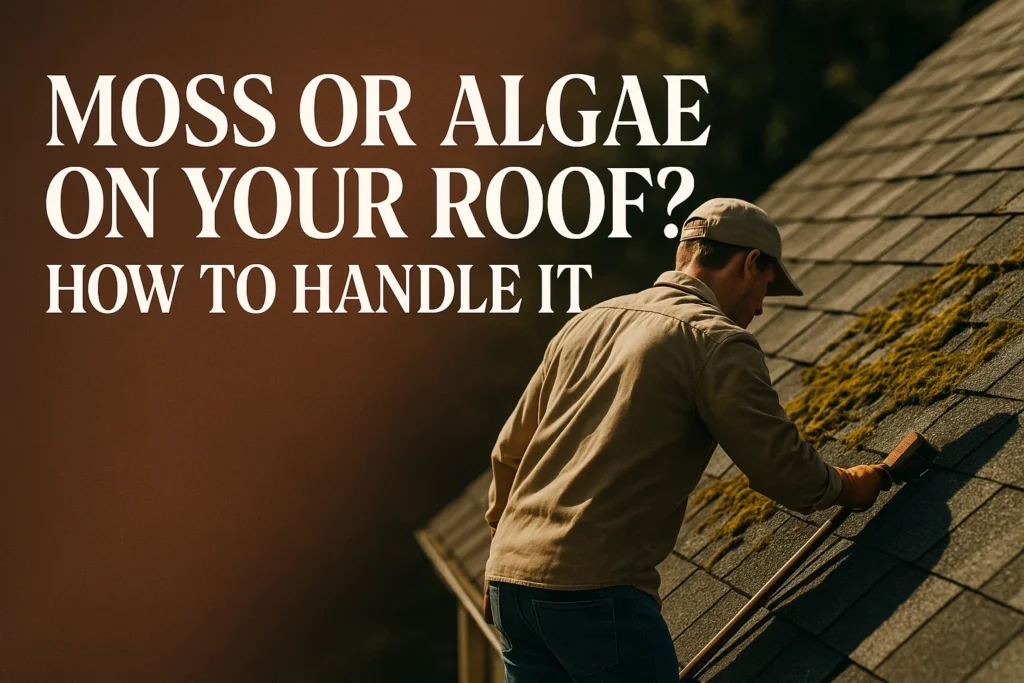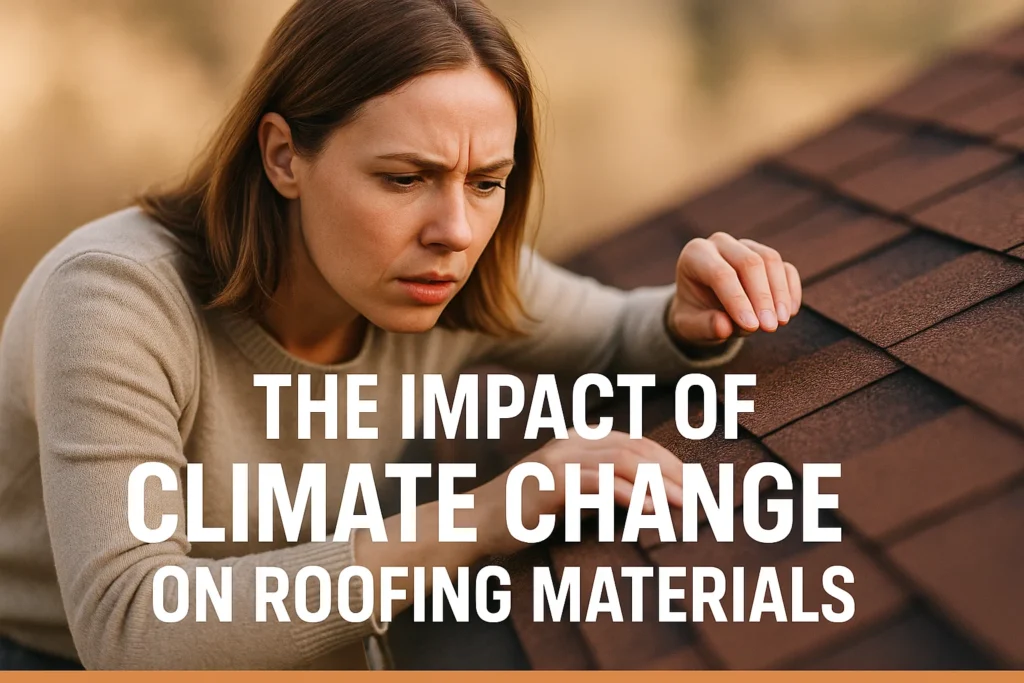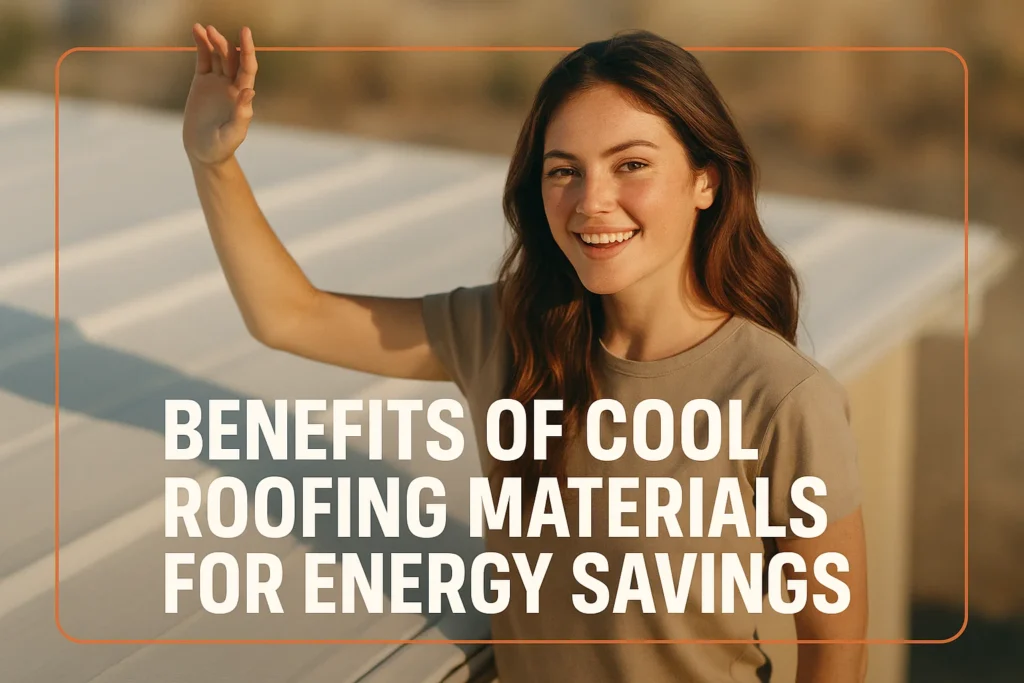If you have seen patches of dark or green on your roof, you may be asking yourself if it is moss or if it is algae. While they may appear nearly the same, moss and algae are not at all the same organism and don’t affect your roof in the same manner. The first step in selecting the best cleaning method is understanding who your unwanted guests are and thwarting their return.
Understanding Moss and Algae on Roofs
Before you get started with cleaning, it’s good to learn what moss and algae are exactly: how they grow and what sort of effect they have on your roofing. Knowing what the difference is will make it easier to identify the difference and determine what the optimal treatment is.
What Is Moss?
Moss is a small, non-vascular plant that grows in low, cushiony clumps on rooftops, particularly in shaded, damp spots. It flourishes where water pools and organic matter collects. Moss is transmitted through spores and holds onto shingles as it feasts on moisture and nutrients.
- Appearance: Fuzzy, thick, raised green patches
- Preferable growth conditions: Shady and damp on roofs, usually under a tree or on he north side of the mountain.
- Impact on roof: Holds moisture to increase shingle rot, eventual leaks, and the buildup of debris that blocks water flow
What Is Algae?
Algae are small, single-celled organisms that adhere flat to the roof. They usually show up as dark green to black streaks or stains, and tend to follow the path of water downhill.
- Appearance: Thin, flat, dark lines or patches
- Growth preference: Grows in sun or shade, eating the limestone fillers in asphalt shingles
- Roof impact: Causes staining, speeds shingle aging from heat absorption, but doesn’t cause structural damage by itself.
Simple Identification Tips:
Spray a solution of bleach on a small patch of the foreign object. If the growth fades or goes away, it’s probably algae; if it doesn’t, it’s more likely moss or mold.
Touch test: moss feels soft and cushiony; algae is slimy; mold seems fuzzy or velvety.
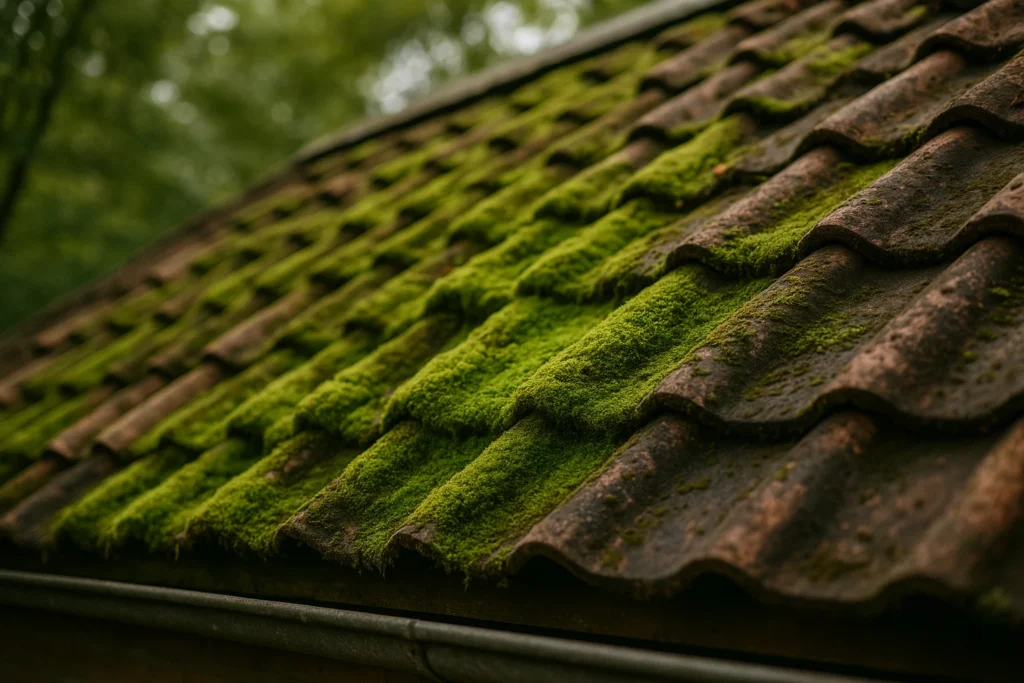
The Difference Between Moss and Algae
| Feature | Moss | Algae |
| Biological Type | Non-vascular plant | Single-celled organism |
| Appearance | Thick, fuzzy, raised clumps | Flat, dark streaks or patches |
| Texture | Soft, cushiony | Slimy or slippery |
| Growth Location | Shaded, moist areas | Warm, humid areas, including sunny spots |
| Damage to Roof | Retains moisture, causes shingle decay and leaks | Causes staining and accelerates shingle aging |
| Removal Difficulty | Requires physical removal or moss killer | Usually removable with algae cleaner or soft washing |
How to Remove Moss and Algae from the Roof
Moss and algae must be treated quite differently based on their own properties. In this article, we provide safe and effective removal instructions that will return your roof to its original look, and maintain its structure.
Moss Removal
- Physical removal: Gently brush thick patches of moss off your roof with a soft brush or special roof moss rake. Avoid aggressive scraping.
- Chemical Treatment: Using a specialized moss kill or moss algae kill product for roofing, kill any remaining spores and thwart regrowth.
- Rinse Softly: Rinse targeted areas with low water pressure, so you do not damage the roofing.
- Safety Note: Always make sure you’re using the correct safety gear, or hiring someone to do it proper.
Algae Removal
- Algae cleaners: Avoid standard algae cleaners, or any type of solution using a pressure washer which will damage shingles, and use algae-safe roof cleaners that kill algae off by soft washing when cleaning algae from your roof.
- Don’t Pressure-Wash: Pressure-washing shingles can also damage them or cause water to seep under the shingles and form spores.
- Multiple Treatments: It may take several applications to get an algae problem under control.
- Clean Gutters: Organic matter which supports algae growth should be cleaned off.
How to Stop Moss and Algae Growth
It is the prevention that ensures a healthy roof and longevity.
- Maximize Sunlight and Ventilation: Prune back overhanging tree branches to minimize shade and allow for additional roof drying.
- Roof and Gutters: Keep the roof, gutters and eavestroughs clean of leaves, twigs, and other debris that trap moisture. Remove any dirt from the gutters on the roof.
- Get Metal Strips Installed: Zinc or copper strips installed around the roof ridge can release ions in the rain that suppress the growth of moss and algae.
- Employ Algae Resistant Material: Whether installing new or re-roofing, you may want to invest in algae-resistant shingles or a coating, when choosing your materials.
- Routine Check-Ups: Plan to examine your roof at least two times a year to detect growth early and correct moisture, or ventilation concerns.
How Long Does It Take for Moss to Grow on Roofs?
The growth of moss depends on environmental conditions such as rain fall, shade, debris possibilities and type of roof. In general, moss can grow again between 3 and 6 years after professional removal, although this easily depends on local weather and maintenance.
The Impact of Roofing Materials on the Growth of Algae in 2025
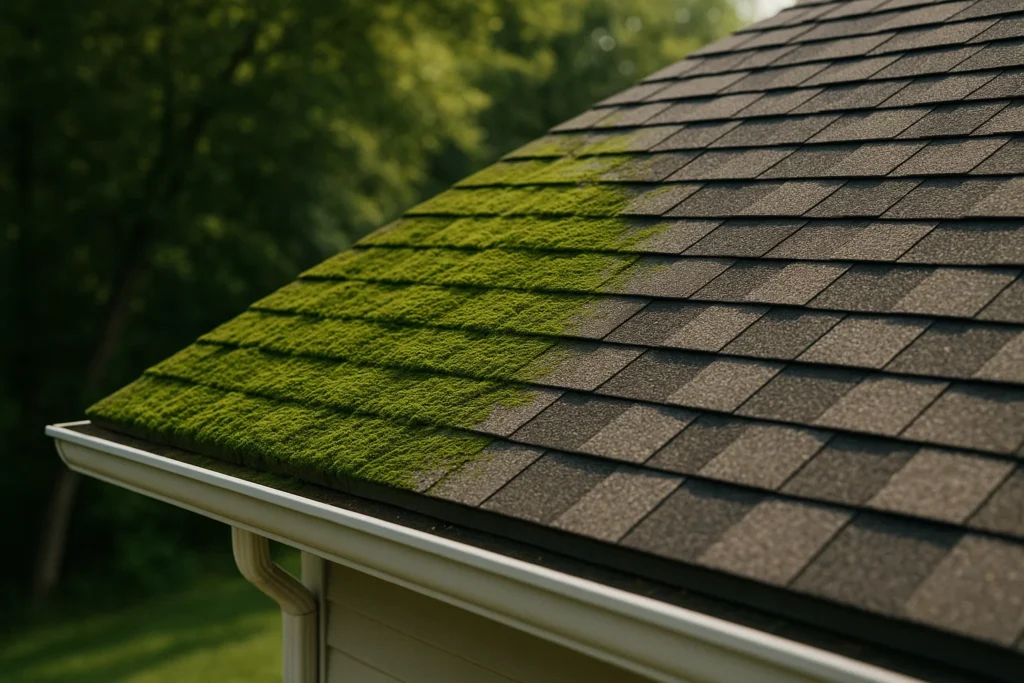
Studies have found that the roofing material can affect the growth of algae on a roof:
- Asphalt shingles – Typically affected due to the organic fillers and the texture.
- Metal and synthetic roof tiles: Even more algae-resistant
- Color and texture: Darker hues soak up more heat, which can hasten growth of algae; lighter colors reflect the sun instead and keep heat at bay
- Geographical and meteorological conditions: Warm and humid climates promote the development of algae, often abundant in obscure or dirt-covered spots
- The market is reacting with algae control roofing solutions, lowering maintenance and extending the life of the roof.
Moss vs Algae: Which Is Worse for Your Roof?
Power washing not only can damage your roof, but it can also be a quick fix with short-lived results, and leaving moss alone too long can cause severe structural damage and require expensive Roof Repairs. Opting to leave it untreated will also allow staining to persist and create a roof environment in which other biological growths, such as algae, thrive. Both are issues that need timely servicing and continuous maintenance in order to maintain the CD appearance of your roof.
In addition, addressing moss and algae early can preserve your home’s look and even save you money on energy bills. The dirty streaks on algae produce contain dark pigments, which absorb solar heat and can increase a home’s need to be cooled in the summer months; moss can speed the aging of a roof by the moisture it retains. Not only does proactive care save you money long-term, but it also maintains the value and comfort of your home.
Conclusion
Moss and algae roofs were invaders with unique effects and features. Moss has more of a direct impact by holding on to moisture and destroying shingles, whereas algae focuses more on staining and speeding up the aging process of shingles. Knowing the difference enables homeowners to clean and prevent more effectively, which in the end prolongs the life of their roofs and keeps their homes looking good.
FAQs
Moss will usually come back within 3 to 6 years, based on local climate and maintenance practices.
Yes, moss holds moisture that can ruin the shingles, lead to leaks, and shorten the life of your roof.
Algae are primarily responsible for staining and speeding up the aging of your shingles, but they typically do not cause structural issues.
Metal, faux tiles, and algae-resistant shingles fare better than standard asphalt shingles.
At least twice a year, after leaves fall in the autumn and before spring rains, to remove debris and ensure that drainage is unencumbered.


